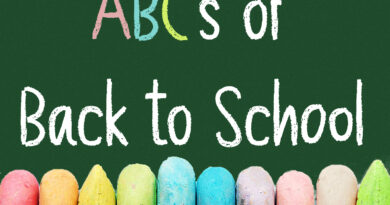ChatGPT in the Classroom
Concerns about artificial intelligence tools
By JOHNA UNDERWOOD

As the school year progresses, students are feeling the pressure of deadlines and commitments. Students have passed the early “honeymoon” stages of the year when teachers are still getting to know them. Now, school is in full swing! For teachers, this can be a fun time of year.
Students are tackling more difficult learning tasks and showing academic growth. But for students, that growth can be hard. The stress of trying to get everything done coupled with gradually increasing learning demands may cause them to look to technology for help and possibly easy fixes. Enter ChatGPT.
For those who may be unfamiliar with this new artificial intelligence tool, ChatGPT is one of several “large language models” that generate text based on a user’s input. Though ChatGPT is perhaps the most popular, many other companies have their own version. Similar to the way an app suggests the next word in a text message based on words commonly used before, massive amounts of writing are fed into ChatGPT, and it “learns” how to craft new text based on patterns identified in the writing. A user simply types a prompt or question into a text box, and the AI generates a response. The response can range from crafting a new recipe given a certain set of ingredients to crafting an essay given a specific prompt. Generative AI has been tested in many different work environments, with positive and negative results. Our classrooms are no exception; students are already trying out ChatGPT and other similar AI tools to help with assignments. Even teachers have tried using this technology as a tool for developing classroom materials. And, as expected, there have been both pros and cons.
ChatGPT can perform certain tasks that make it an excellent learning tool. If students are struggling with a written task, it can help generate and organize ideas. It can also succinctly summarize complex information, such as the outcome of a historical event or the workings of a biological system. However, it has its shortcomings. It is not great at making complex arguments. Its creativity is limited. It often gives incorrect information. And, while it does have an impressive vocabulary thanks to the large amount of text it has been fed, the text can feel a little dull, like the way Siri or Google talks — precise and polite, but without individuality.
What might be even more of a concern for parents and educators is that students may view ChatGPT as a shortcut to task completion, avoiding creative processes that lead to learning. Learning something new involves trial and error, and often a struggle. While we don’t want to frustrate our students to the point of giving up, we also don’t want to rob them of the joy of working through the struggle to realize they have mastered a new understanding or skill. Teachers also worry that this new AI tool will encourage students to plagiarize, passing off the technologically generated text as their own thinking and writing. Because of these concerns, many teachers, school districts, and even college professors have developed strict guidelines for when, if ever, the use of AI is allowed. For both parents and students, it’s a good idea to check your school’s and teachers’ academic honesty policies before using ChatGPT or other AI tools.
However, many educators are not completely opposed to AI as a tool to support student learning. They are teaching students not only how to use ChatGPT as an effective aid in the learning process, but also how to use the tool ethically, acknowledging when ideas or information are obtained from AI, just as they would when using other forms of technology. The fact is that, like cellphones, spell checkers, and even graphing calculators, this new technology is not likely to simply disappear. And, even if ChatGPT’s popularity is short-lived, there will always be new technology that can be used positively or negatively. One of the best lessons we can instill in students is to be life-long learners who are also thoughtful users of whatever new technology the future creates.
Johna Underwood teaches English at Gatesville High School.




